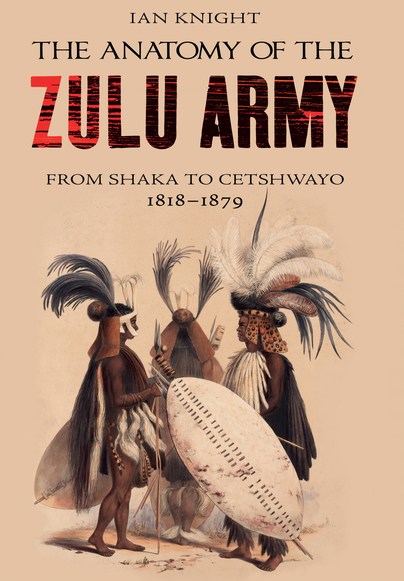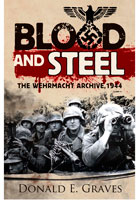The Anatomy of the Zulu Army (ePub)
From Shaka to Cetshwayo, 1818-1879

File Size: 51.2 MB (.epub)
Pages: 284
Illustrations: 69
ISBN: 9781848329119
Published: 8th February 2016
| Other formats available | Price |
|---|---|
| The Anatomy of the Zulu Army Paperback Add to Basket | £14.99 |
Forces of the independent Zulu kingdom inflicted a crushing defeat on British imperial forces at Isandlwana in January 1879.
The Zulu Army was not, however, a professional force, unlike its British counterpart, but was the mobilized manpower of the Zulu state. Ian Knight details how the Zulu army functioned and ties its role firmly to the broader context of Zulu society and culture.
The Zulu army had its roots in the early groups of young men who took part in combats between tribes, but such warfare was limited to disputes over cattle ownership, grazing rights, or avenging insults. In the early nineteenth century the Zulu nation began a period of rapid expansion, and King Shaka began to reform his forces into regular military units.
Ian Knight charts the development and training of the men that formed the impi which later operated so successfully under King Cetshwayo. He analysis the Zulu's fighting methods, weapons and philosophy, all of which led to the disciplined force that faced the British army in 1879.
Author article: 'The Battle of Mome Gorge' as featured by
The Armourer, December 2019
As featured by
Wargames Illustrated, April 2019
Author article: 'The Love Charm of Our People! Zulu Regimental Shield Colours in the War of 1879' as featured in
Wargames Illustrated, March 2018
First published in 1996, by Greenhill Books and again in 2016, this paperback version was re-published by Frontline which gives an indication as to how good it is. For me, this is the Zulu bible - everything you need to know about this warrior race over a 60-year period during the 19th Century. The battles fought are legendary and well covered many times over in other books, but Knight' 'anatomy' goes much deeper. The book explains why the Zulu Army was so fearsome and effective, by exposing how each warrior was virtually nurtured into the role from birth and remained loyal until death. Training, weapons, clothing and customs are just a few of the topics covered, not to mention hierarchy and spiritual beliefs all of which would serve to keep the Zulu at the top of the food chain until Isandlwana in 1879.
Military Modelling - David H. Smith
The book has a number of black and white photographs spread through its pages, plus a few line drawings of maps relevant to key battles. Despite the original text from articles written much earlier, this book has stood the test of time and remains one of the benchmark works for all interested in, or researching the Zulu nation.
“Know your enemy” is a fundamental mantra of soldiering. Lack of knowledge, or under-estimating capabilities, can have disastrous consequences as the British discovered following the opening salvoes of the Anglo-Zulu war in 1879. Despite his extensive campaign experience on the continent of Africa, the British commander Lord Chelmsford had failed to comprehend that the Zulu were unlike any of the foes he had encountered on earlier wars. In “The Anatomy of the Zulu Army” Ian Knight explains what made the Zulu such an effective fighting force.
Peter Weedon
The author traces the evolution of the Zulu army from the time of King Shaka through to its zenith at the battle of Isandlwana and subsequent decline. This comprehensive book includes recruitment, duties, training, weapons, clothing and regalia and customs. While bravery and a fearsome array of weapons were fundamental to Zulu success, rituals and culture played essential roles prior to battle. Ian Knight describes the nature of ancestral and spiritual beliefs along with medicinal preparations to embed an aura of invincibility.
Some of the most evocative passages relate to command and control and contact with the enemy where “the speed of the final advance was terrifying.” Describing the culmination of the battle at Isandlwana, Knight writes the Zulus “launched a shower of throwing spears” which struck “before the warriors closed hand-to-hand.” Zulu supremacy was built on visceral combat.
Each section is supported by extensive contemporary accounts along with period and current photographs. There is a handy glossary as well as a chapter on the Zulu amabhuto which also explains the shield patterns associated with each regiment.
Despite the plethora of books on the Anglo-Zulu war, the book is the only in-depth reference work on the Zulu army. The book will provide the reader with a greater understanding and appreciation of the courage and traditions of the Zulu people.
About Ian Knight
Ian Knight is internationally recognised as a leading authority on the Anglo-Zulu War. He has contributed to numerous TV documentaries on the subject, including the BBC’s Timewatch and Channel 4’s Secrets of the Dead. In 2000, he was the historian attached to the archaeological dig at the Isandlwana battlefield. He has written and co-written numerous books on the subject, including The Anatomy of the Zulu Army, Brave Men's Blood, The National Army Museum Book of the Zulu War, Zulu Rising and Who's Who in the Zulu War. He is a recipient of the Anglo-Zulu War Historical Society’s Prince Mangosuthu Buthelezi Award for a lifetime’s achievement in the field.




















